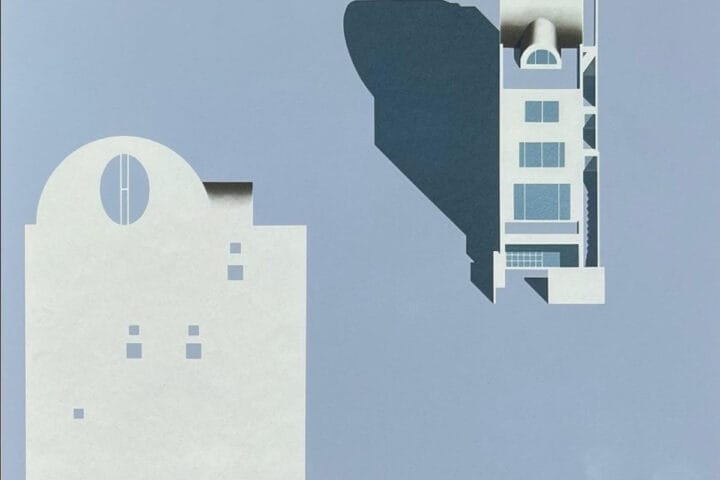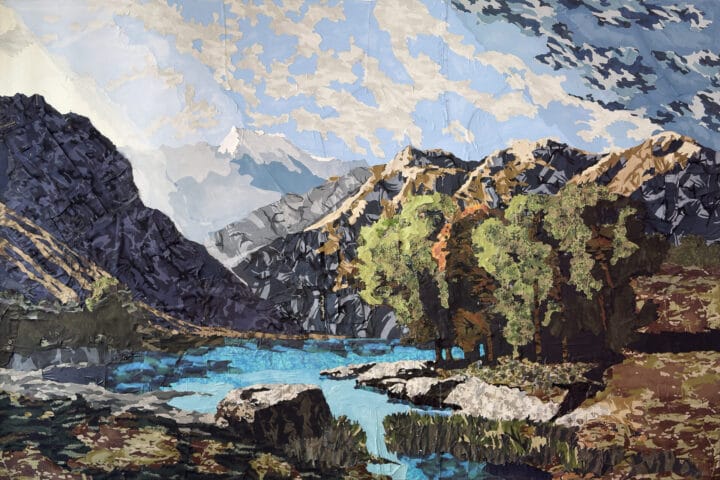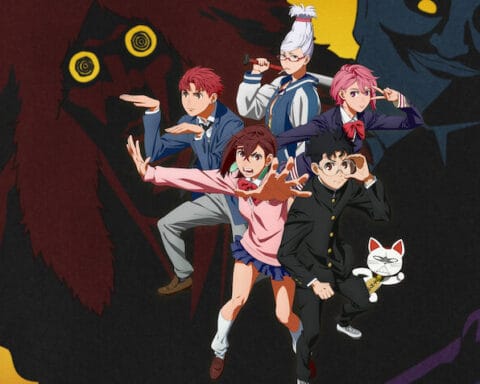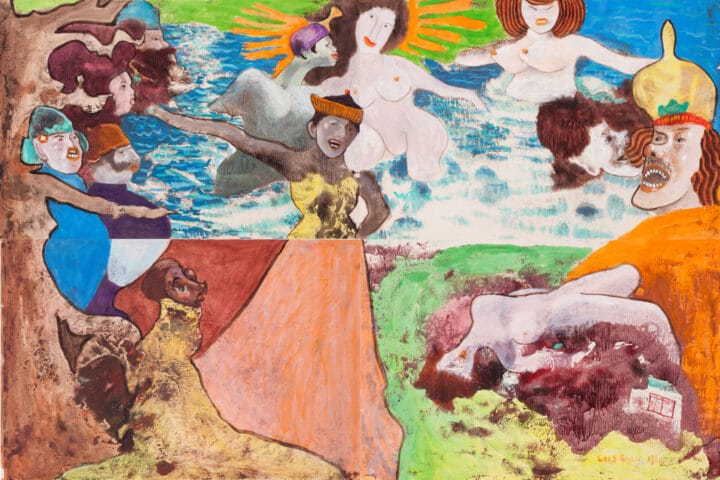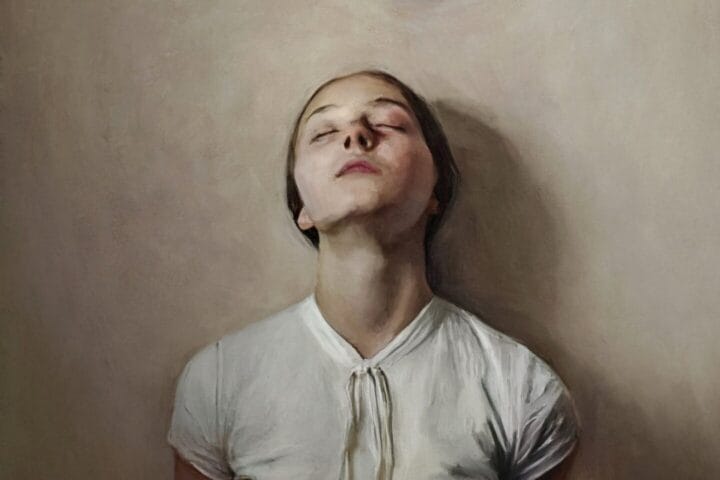What Lies Within brings together works from the past two decades by some of the most significant artists of Saudi Arabia and its diaspora from the private collection of Saudi patron and collector Basma AlSulaiman. The exhibition is the first in a series in AlUla celebrating pioneering collectors and patrons in Saudi Arabia, who have sparked and steered the country’s relationship with the arts, paving the way for a flourishing cultural sector today.??
Alongside building a collection of both Saudi and international artists, a decade ago AlSulaiman founded BASMOCA, the first virtual museum in the world to use cutting edge gaming technologies allowing wide audiences to view works and engage as avatars within its museum space. Curated by artist Lulwah AlHomoud, an influential figure in the Saudi Arabian art scene, the exhibition links AlSulaiman’s work in the digital space to the physical world and is a tribute to her invaluable support for Saudi artistic production and talent. The collection preserves a remarkable visual record of Saudi heritage and reflects a journey in the public response to art. AlHomoud’s sensitive curation has shaped a multi-layered exhibition which conveys the artists’ and collector’s connection to both local and global contemporary culture. The show documents personal histories and acts as a tool for wider connectivity and education.
What Lies Within marks the first time that these important works have been shown together in Saudi Arabia. The dynamic group of seventeen participating artists constitutes a prominent generation in the development of Saudi contemporary art and its reception internationally. The seminal pieces on display crucially represent pivotal moments in shaping the artists’ varied practices – for which AlSulaiman has a discerning eye. As evoked by the exhibition’s title, prevalent themes are the expansiveness of Saudi identity, spirituality, and culture, and how these have evolved from the past to the present day, across a diversity of media. The show seeks to present Saudi art on its own terms, exploring the vibrant breadth of output from artists working in the Kingdom and its diaspora.
Installed in a non-chronological format, allowing visitors to immerse themselves in the artists’ individual stories, the artworks are loosely grouped by theme, drawing out resonances between them. In the centre of the space is Shadia Alem’s new iteration of her internationally acclaimed The Black Arch (2011/ 2022) with site-specific audio and visual elements, connecting the energy and spirituality of AlUla and Mecca. Alem spent time in AlUla exploring its people, history, and landscape to collect video and sound content to be projected onto the work. The stainless steel, cast iron, fabric, and stone piece looms large and represents the culmination of the artist’s journey from Mecca to the Venice Biennale – where the work was debuted in 2011 – then onto Paris, and now to AlUla; it is a meditation on faith, cultural exchange, and creativity.

The influence of Islam – and, specifically, the holy city of Mecca – is central also in the work of Ahmed Mater. Magnetism (2009) combines art, science, and the concept of religion and identity: iron filings radiate around a black cube, an emanation of attraction that evokes a congregation of pilgrims thronging the Ka’aba. Jama’a (2008) from the series Humbly and Devout by Noha AlSharif depicts a group of six featureless and abstract female figures, reflecting the power of performing prayers, multiplied by togetherness. This exhibition comes at a key moment in the sculptor’s career; she is now creating new work for the first time in a decade.
Two works by Ayman Yossri Daydban – Ameen (2011) and The Opening (2010) – explore the meaning that is lost in the process of translation, prompting the viewer to question the validity of what they see and hear, and the exclusions that take place through cultural interaction. In Saddek Wasil’s installation Neglected Faces (2011), tin cans are mounted on wood to express the silence and rigidity of a group of people who are not willing to speak or listen openly in a world where dialogue and understanding is increasingly and urgently needed.
Iconic photographic series by Manal AlDowayan and Adel AlQuraishi provide a striking record of Saudi traditions and society. AlDowayan’s twelve-piece series I Am (2005) and six-piece series The Choice (2005) address women’s historical contribution to the development of Saudi society. The arresting portraits of the last eight remaining guardians of the Prophet’s Mosque that make up AlQuraishi’s The Guardians series (2013) memorialise the end of a long tradition and open up a dialogue around the nature of visual documentation.
Mixed-media installations by Maha Malluh, Mohammed AlGhamdi, and Zahrah AlGhamdi each explore facets of Saudi heritage and culture by incorporating traditional materials and found objects. Malluh’s Almuallaqat (2017) is made with used aluminium cooking pots collected from flea markets across Saudi Arabia. As well as preserving the memories of their previous owners, the composition of the pots evokes the rhythm of poetry and a time when Arabian culture proudly celebrated its sophisticated language. In From Here We Started (2018), made of everyday materials leather and cotton, Zahrah AlGhamdi revives the stories and culture of the sand dunes where inhabitants change over the years whilst the place itself remains the same. Exploring the history behind discarded objects, through a considered process of upcycling Mohammed AlGhamdi allows materials to retain their original aesthetic value in Memories (2009) whilst imbuing them with a human narrative and renewed emotional significance.
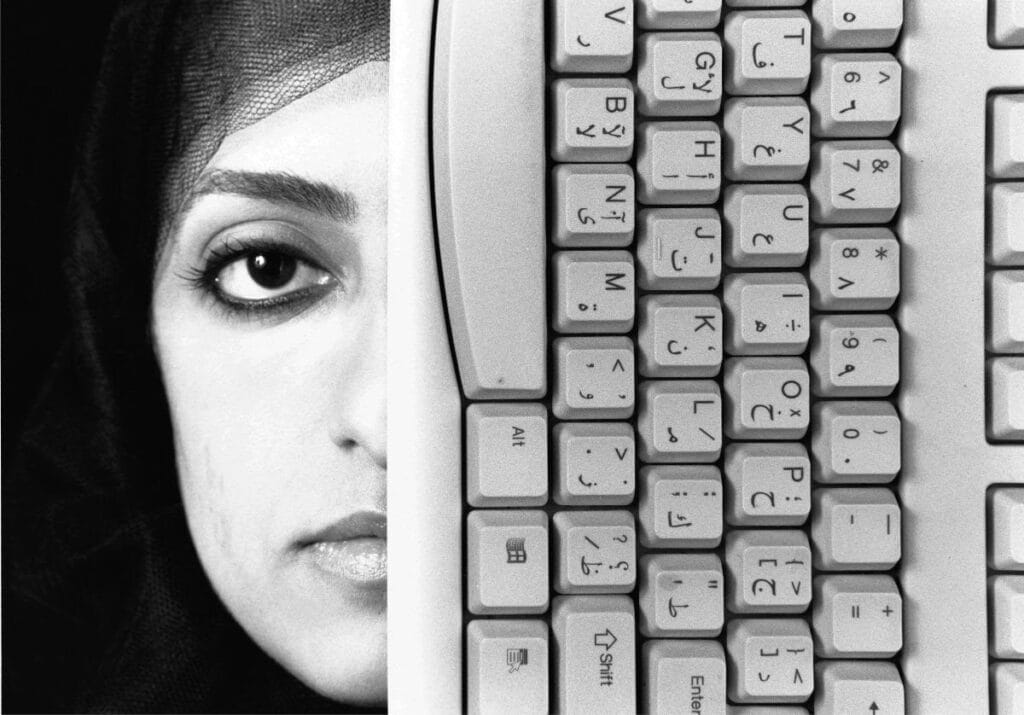
For both Dana Awartani and Lulwah AlHomoud, Arabic script is at the heart of their practices. Awartani’s work on paper Scrolls of the Prophets II (2015) is rooted in the philosophy of assigning a numerical value to Arabic letters and she translates the twenty-five prophet names in the Qur’an into a geometric form. Using her own geometric rules based on mathematical formulae, for Languages of Existences Mural (2020) – part of a lifelong project for the artist – AlHomoud codes the ninety-nine names of God.
Rashed AlShashai and Musaed AlHulis meanwhile find their inspiration in the structures and forms of Islamic architecture. In his installation Holly-Wood (2014), AlHulis simplifies the rich architectural heritage symbolised by domes from the Islamic world – such as the Taj Mahal and Dome of the Rock – to create reductive, commercialised cut outs in colourful fabric, evoking the limitations of Orientalist narratives. AlShashai too employs playful forms and colour to construct a dichotomy between spirituality and consumerism. In Brand 2 (2019), he reflects on the mundanity, superficiality, and omnipresence of media in contemporary life by creating sculptural murals with illuminating light resembling the stained glass found in mosques and churches.
Using experimental fashion design and textiles as a medium to explore the relationship between humans and their direct environment, The Skin I Live In (2019) by Filwa Nazer combines delicate cotton fabric with industrial mesh typically used in construction to create a tactile, architectural piece, with abstract lines and shapes formed by threads and embroideries. The work addresses the act of (re)constructing the self and muses on the association between our physical being and the space we occupy.
Abdulnasser Gharem uses concrete as a gate to open conversations around untold stories. Across the surface of Concrete Block IV (2010 – and part of his series, Don’t trust the Concrete) symbols and motifs create hundreds of embossed impressions representing different ideologies on this manmade wall block formerly used to separate cities.
Displayed in Maraya – one of the world’s architectural wonders, with 9,460 square meters of mirrors covering its exterior walls – this temporary exhibition welcomes visitors who seek to discover the artistic energy and visionary inspiration present in Saudi.
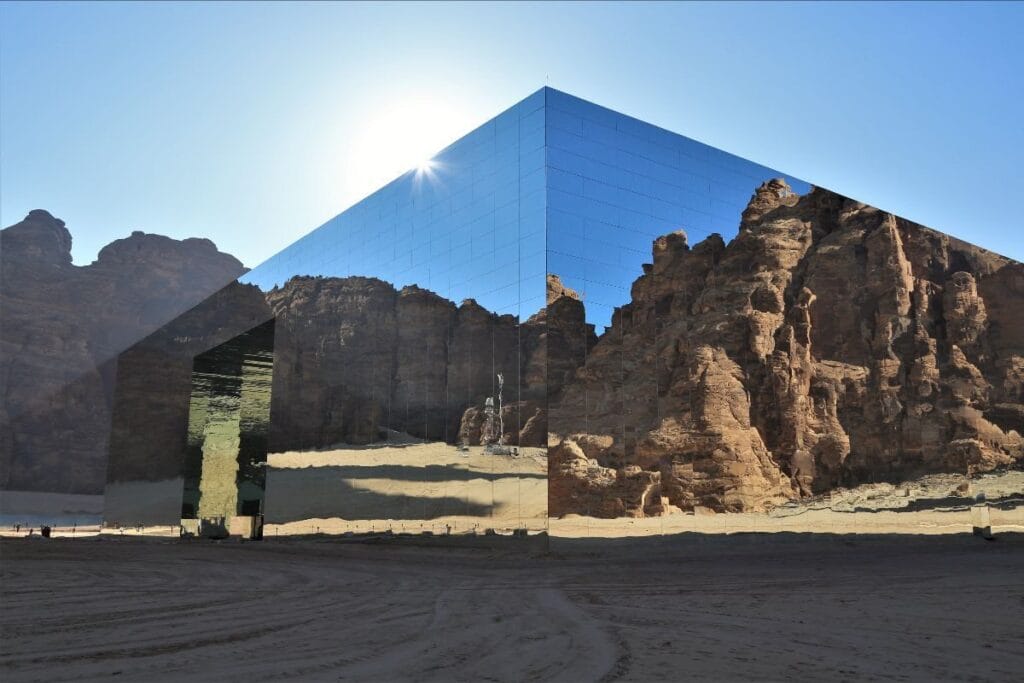
What Lies Within takes place as a highlight of AlUla Arts, the inaugural arts festival and one of four distinct festivals under the winter events umbrella of AlUla Moments. AlUla Arts also includes Desert X AlUla, a recurring, site-responsive exhibition of outdoor art, and the activation of AlJadidah, an area adjacent to AlUla Old Town which will be transformed into a vibrant hub of activity and performances. The outdoor Cinema El Housh will be another highlight presenting a curated selection of Saudi arthouse filmmakers. As detailed in AlUla’s ‘Journey Through Time’ masterplan, AlUla Old Town adjoined by the Cultural Oasis is one of five districts that will serve as a nexus of community, cultural production, and artistic explorations.
Additionally, between February and March, the first edition of collaborative initiative Cortona on the Move AlUla occurs, titled Past Forward. Time, Life and Longing, presenting cutting-edge photography in AlUla. Works from Italy’s Cortana festival will be seen in a unique outdoor exhibition in AlUla’s AlJadidah Village alongside works by Arab artists, curated by Arianna Rinaldo and Kholood Al-Bakr.
Collector and patron Basma AlSulaiman says:
“I have sought to make my collection available to as many people as possible all over the world by embracing technology and creating a virtual museum. To now be bringing these works to physical audiences in AlUla continues my desire to make art accessible to the public. This dynamic and varied exhibition is a testament to the innovation and creativity of a generation of key Saudi artists whose works explore a range of themes around heritage, identity, and place.”
Curator Lulwah AlHomoud says:
“Some art collections go beyond preserving memories and visual culture, because they reflect a journey that can also shift how the public responds to art. Basma AlSulaiman’s passion and belief in Saudi artists has led her to acquire some of the most significant artists in the Kingdom alongside her international collection over the years.”
Arts and creative planning director at Royal Commission for AlUla, Nora Aldabal, says:
“AlUla’s arts and cultural events will include contemporary art exhibitions that champion Saudi people, traditions and culture and we are delighted to be celebrating the visionary work of collector and patron Basma AlSulaiman. The show offers inspiration towards a creative future as we build the next layer in the region’s creative continuum.”
Basma Al Sulaiman dedicates her collection to the loving memory of her son Mohammed Al Juffali.


